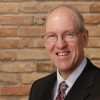But those difficulties don’t compare with something much harder: Getting people who are tired of the mere mention of COVID-19 to take a step backward and wear masks again. Or to do the one thing that would make the most difference — get a shot.
|
A friend once noted that getting the economy restarted would be harder than shutting it down had been at the beginning of the pandemic. True, as some news stories have noted, a few people feel scared to venture out of their homes and back into the normal flow of people on the streets. And yes, some things have changed for good.
But those difficulties don’t compare with something much harder: Getting people who are tired of the mere mention of COVID-19 to take a step backward and wear masks again. Or to do the one thing that would make the most difference — get a shot.
0 Comments
“There is only one way to achieve happiness on this terrestrial ball, and that is to have either a clear conscience or none at all.” --Ogden Nash.
Whoever sent $300 anonymously to Orem City earlier this month, along with a letter saying he was paying for damage he did to some stop signs as a teenager, clearly had a conscience. The rest of us? The jury is out on that one. But then, how would you gauge such a thing? Maybe you do so with another question. How much would you need to steal, or perhaps receive in error, before you would feel enough guilt to return it? Twenty years ago, as the 21st century dawned, I made a bold prediction. By the year 2100, people could be living to age 150 or more.
Well ... it doesn’t look good, so far, does it? I had a lot of reasons for optimism back then. At the start of the 20th century, life expectancy in the United States was 47 years. By 2000, it had reached 76.9. With all the advancements underway in medicine, and with genetic scientists working hard on unlocking ways to increase longevity, why shouldn’t we have expected an even larger increase over the next 100 years? I wasn’t completely out on a limb. Some experts back then were predicting 150 to 200 year lifespans. On the day I was born, the front page of the New York Times reported on Fidel Castro’s first visit to the United States as the leader of Cuba.
The story noted that he had met with acting Secretary of State Christian A. Herter. Castro had said there was no reason why relations between the two countries should not be improved. Sixty-two years later, there are many. Let’s start with 109. That’s the number of political prisoners Human Rights Watch said Cuba was holding in 2019. Add to that the 150 names the New York Times says Amnesty International has compiled of people arrested in recent protests, a number that seems to be growing by the day. If you heard anything at all about the just-completed Democratic mayoral primary election in New York City, which used a ranked choice voting method, chances are it was negative.
Election workers screwed up and forgot to delete test ballots from the system, which meant early returns were wrong. That, in turn, meant that people (and candidates) freaked out. Bedlam in Gotham! Republicans pounced! Sen. Tom Cotton,. R-Ark., said it meant ranked choice voting was “a corrupt scam!” Holy skyscrapers, Batman! The other day, a close friend took a son with a serious health problem to a Wasatch Front hospital. There, she discovered no available beds in the emergency room and, when he was admitted, no place to put him. Nurses were forced to call other hospitals to locate space, which wasn’t easy.
My friend had discovered what seems almost to be a secret, despite the numbers being broadcast daily. While many people in Utah are acting as if the pandemic is almost over — sports teams are allowing capacity crowds, restaurants are thriving — a new surge is underway. On Wednesday this week, 574 new cases of COVID-19 were reported in Utah, followed by 540 on Thursday. The numbers were the highest since April. |
Search this siteLike what you read here? Please subscribe below, and we'll let you know when there is a new opinion.
The author
Jay Evensen is the Opinion Editor of the Deseret News. He has more than 40 years experience as a reporter, editor and editorial writer in Oklahoma, New York City, Las Vegas and Salt Lake City. He also has been an adjunct journalism professor at Brigham Young and Weber State universities. Archives
July 2024
Categories
All
Links
|

 RSS Feed
RSS Feed

